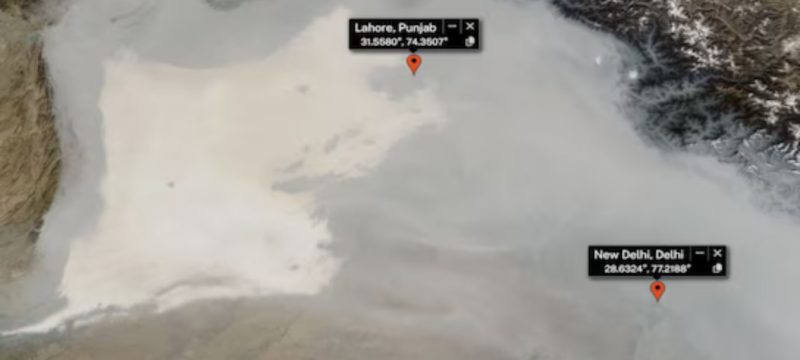Toxic black smog in Pakistan has reached critical levels, with pollution so severe that it can be seen from space.
On Monday, NASA released satellite images via NASA Worldview, showing a massive cloud of grey smog blanketing Pakistan’s Punjab province and parts of eastern India, including New Delhi and surrounding areas.
In response to the dangerously high Air Quality Index (AQI) levels, authorities have taken strict measures, including the closure of schools and public spaces.
Read more: Punjab Plans Artificial Rain in Rawalpindi to Combat Smog
The images revealed Lahore and Multan shrouded in a thick haze, with visibility drastically reduced due to the smog. Streets in the affected areas remain heavily polluted, posing significant health risks.
Each winter, a toxic yellow haze forms due to emissions from coal-fired power plants, traffic congestion, stagnant weather conditions, and agricultural waste burning, exacerbating pollution levels.
According to IQAir, Punjab’s AQI has surpassed 1,000 multiple times over the past week, far exceeding the threshold of 300, which is deemed hazardous.
On Monday, Multan recorded PM2.5 levels over 110 times higher than the World Health Organization’s safe limit, marking one of the worst pollution episodes.
The Environmental Protection Agency of Pakistan reported an alarming surge in respiratory illnesses, allergies, and eye and throat irritations in Faisalabad, Multan, and Gujranwala, where air quality is categorized as “extremely hazardous.”









